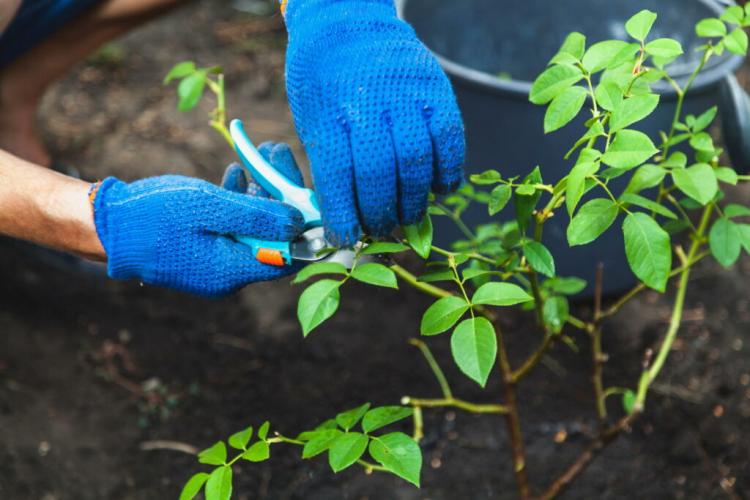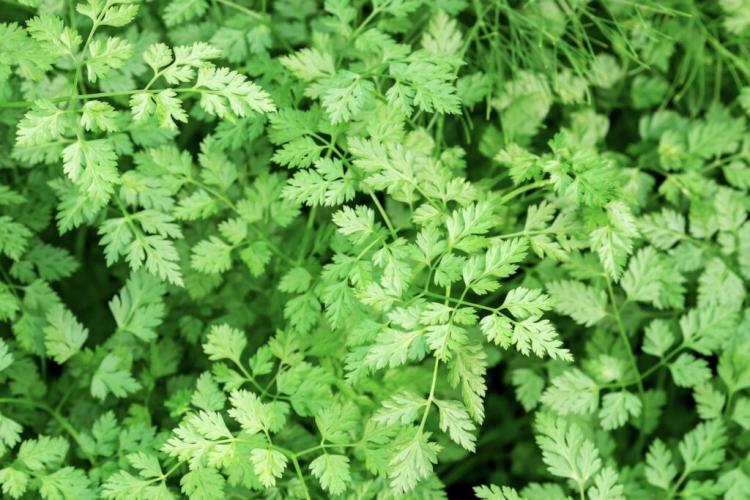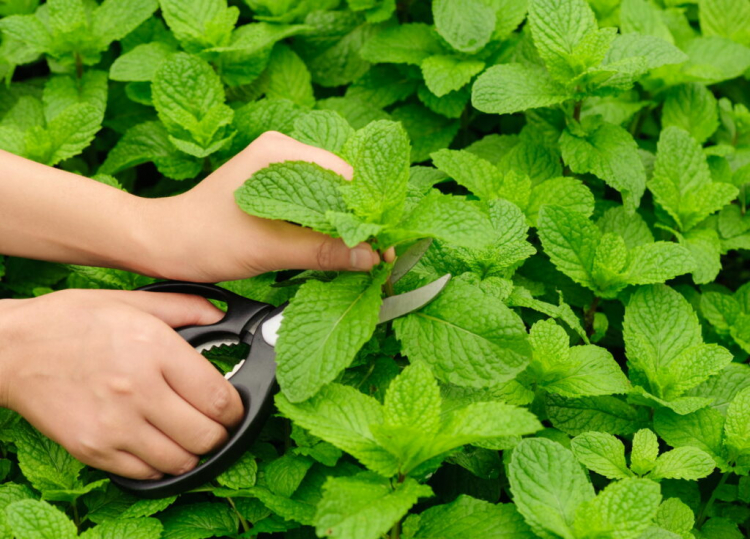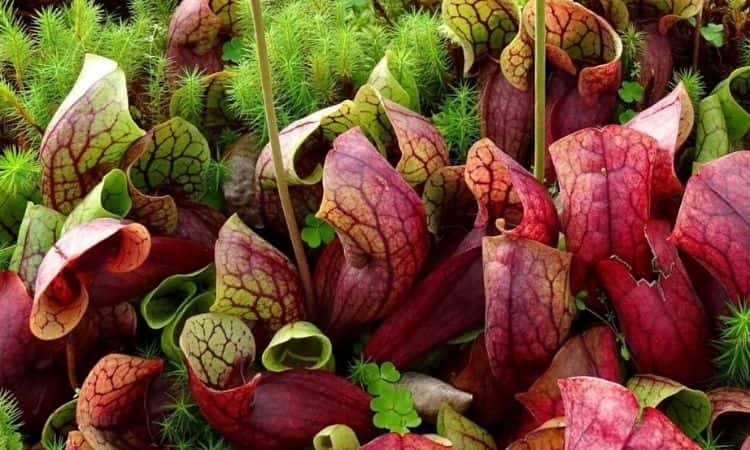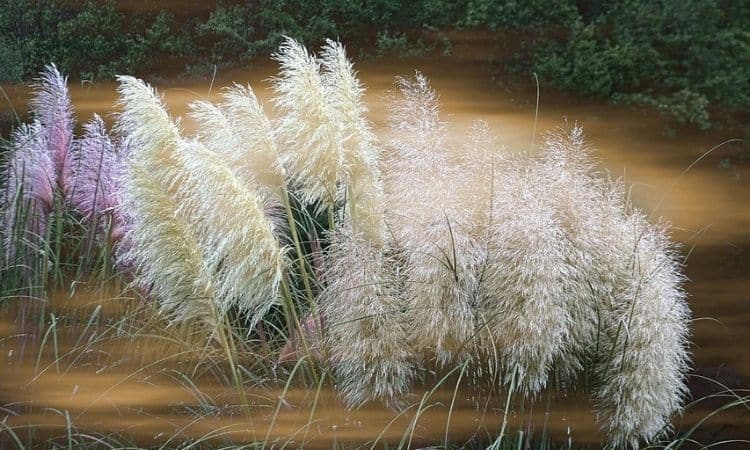Does Snake Plant Need Fertilizer
If you own a snake plant in your home or garden and you are looking for information on whether or not to fertilize them, here is a guide to help you.
Snake plants are one of the most popular succulent plant species, and these plants can withstand high temperatures and climatic conditions. These succulent plants are ideal for folks who often neglect their plants for a long time.
They do, however, require some attention during the growing season in order to stay healthy, and one of the ways you can keep them alive is by fertilization. Is it necessary to fertilize snake plants on a regular basis, or can you just ignore them and let them survive on their own? Let us dig deeper!
 Generally, snake plants do not need so much fertilization; however, they will develop and grow faster if you fertilize them throughout the growing season. If you are looking for a quick answer that is not condition-specific, then we can recommend that you use a 10-10-10 fertilizer or 20-20-20 fertilizer every 4-6 weeks for optimal plant growth. To prevent overfertilization, half the maximum amount is recommended.
Generally, snake plants do not need so much fertilization; however, they will develop and grow faster if you fertilize them throughout the growing season. If you are looking for a quick answer that is not condition-specific, then we can recommend that you use a 10-10-10 fertilizer or 20-20-20 fertilizer every 4-6 weeks for optimal plant growth. To prevent overfertilization, half the maximum amount is recommended.
The Snake plant, like all other plants, requires simple fertilizer and sunlight for proper growth. However, because they are succulent, we have to be careful while adding fertilizers to avoid overfertilization.
It should also be noted that fertilizer use would have to be cut in half during the autumn season and avoided throughout the winter.
This article will go through everything from how to fertilize your snake plant, how often it should be fertilized, and some fertilizers that you can use. So, let us get started!
How To Make Your Snake Plant Happy
Table of Contents
As we mentioned earlier, snake plants retain water in their leaves, and they can survive long without watering or the addition of fertilizers. However, to make your snake plant happy, you have to fertilize and water your snake plant. Note that snake plants should be allowed to dry fully before you water them again.
Watering your snake plant is vital, but fertilizing the plant is also critical.
You must consider temperature, humidity, and type of fertilizer when growing a healthy snake plant.
Adding fertilizer to an indoor plant is important because indoor plants are grown in pots, and they can easily retain whatever is added. Although frequently adding liquid fertilizers or watering the plant often might make some of the soil nutrient to be washed to the bottom of the pot and out of the drain.
Some beginner plant lovers prefer to get a snake plant rather than other indoor plants because of their low care and survival ability.
However, this does not imply that your snake plant will continue to grow even if you do not provide it with the proper nourishment. If you do not feed your plant, they will not be happy. Lack of snake plant fertilization can lead to the following;
- Snake plants will not get their variegation.
- Little or no growth
- Snake plant roots will deteriorate.
- The edges of the leaves are yellowed or browned.
- There will be stunted growth.
All of the following symptoms are not limited to the snake plant being under-fertilized or over-fertilized. It might be due to various other factors, like your plant being underwatered or overwatered.
Light conditions are also important for the proper growth and development of your plant.
If all other parameters are met, and you still notice those symptoms, the plant is likely suffering from insufficient fertilization. As a result, feeding your snake plant is essential.
You Might Like Snake Plant
When should you fertilize your Snake Plant?
So many people have asked about the best time to fertilize a snake plant.
When a snake plant is in the nursery, they usually apply a slow release fertilizer to the soil to keep the plant alive. However, before you purchase and get the plants to your home, all the fertilizer’s benefits may be gone.
 This is when you have to make a decision and carefully examine the plant to know the best fertilizer to use. In this scenario, I recommend applying a mild fertilizer combination so that you would not apply too much fertilizer. Too much fertilizer may kill your snake plant.
This is when you have to make a decision and carefully examine the plant to know the best fertilizer to use. In this scenario, I recommend applying a mild fertilizer combination so that you would not apply too much fertilizer. Too much fertilizer may kill your snake plant.
We would also suggest that you fertilize your snake plant only in the growing season, which is usually summer and spring.
Fertilizer serves as a source of minerals and vitamins for plants. Snake plants require vitamins in the same way that we do. But, once again, too much fertilizer is bad.
You Might Also Like Do Snake Plants Attract Bugs
How often should snake plant fertilizer be added to the soil?
Since we already know that snake plants are succulent, it is also worth noting that they don’t need a lot of water or fertilizer.
The frequency with which you should fertilize your snake plant is determined by a variety of factors.
Snake Plant’s Pot size
First and foremost, it is determined by the snake plant’s pot size. Indoor snake plants can be nursed in a large container. But note that the larger the snake plant’s pot size, the more snake plant fertilizer will be used. Also, note that you cannot use a giant pot and potting soil for a very small plant.
You Might Like Potting An Olive Tree
Snake Plant Fertilizers
Secondly, it is also determined by the type of snake plant fertilizer used.
We recommend fertilizing your snake plants just once a month, and this should be done only during the growth season.
Since you don’t want to add excess fertilizer to your plant, you should add a very weak fertilizer solution.
When it comes to fertilizing snake plants, you must use the best snake plant fertilizers available to meet the snake plant’s nutritional needs. Feeding snake plants would not be difficult because they do not need to be fed often.
If you use a granular fertilizer that dissolves in the snake plant’s soil, then, feeding snake plants twice throughout the growth season would be enough.
Micronutrients are required for the snake plant’s growth. To prevent nutrient deficiency and ensure effective nutrient distribution, you need to add some compost to the potting mix to ensure that you have beneficial microbes in the snake plant’s root.
Season
Finally, you have to ensure that you add only half of the required amount of fertilizer during fall. Throughout the winter season, you will not need to add fertilizer because the snake plant’s roots would be dormant during that period.
During the winter, snake plant’s roots may survive for 1 to 2 months without needing water; thus adding fertilizer is not recommended.
Choosing the Best Snake Plant Fertilizers
A snake plant will not require so much fertilizing like many other indoor plants. However, you still need to give the plant’s roots access to enough nutrients in order to grow at their full capacity.
If you’re used to nourishing succulent plants, the idea of fertilizing a snake plant would come naturally. After all, snake plants, like cacti, are succulents. One thing to keep in mind is that all cacti plants are succulents; however, not all succulents are cacti.
Aside from these ties, cacti, and snake plants have a tolerance for harsh growth conditions. As a result, many inexperienced gardeners prefer not to feed the plants at all. But this is detrimental to the plant.
N-P-K Ratio of Snake Plant Fertilizer
Snake plants thrive when you feed the plants with a well balanced fertilizer. What does a balanced fertilizer mean? A balanced fertilizer is an N-P-K fertilizer whose ratios are fairly close to each other.
So, what is N-P-K ratio? N-P-K ratio a 3-sequence number with hyphens separating them seen on fertilizer labels. These 3 figures reflect the percentage of nitrogen, phosphorous, and potassium content of any specific fertilizer recipe.
-
Nitrogen
Nitrogen (N) is the most critical macronutrient needed by most plants. It is an essential part of the photosynthetic process in plants. Nitrogen is a key component in most fertilizers since its nutrients are the most consumed by plants. While snake plants require less nitrogen than many other plants, Unlike many other indoor plants, snake plants need lesser nitrogen.
-
Phosphorus
Phosphorus (P) is essential for fruit production, root health, and plant flowering. Phosphorus supplementation is needed by succulent plants to promote flowering even though they rarely flower. Applying a phosphorus-rich fertilizer may boost the chances of the plant developing a flower stem.
-
Potassium
Potassium (K) promotes plant structure and development. Potassium is important for water storage in the cell of most succulent plants.
Depending on how fast you want the plant to grow, an appropriate N-P-K ratio for a snake plant may look like this (10-10-10 or 6-12-6). A 10-10-10 balanced fertilizer has 10% nitrogen, 10% phosphorus, and 10% potassium, a 6-12-6 fertilizer, on the other hand, comprises 6% nitrogen, 12% phosphorus, and 6% potassium.
Soil Nutrient Absorption and Soil PH
Snake plants’ soil may survive in a variety of pH values. The potting soil of snake plants should have a pH of 5.5 to 7.5. This soil pH is reasonable for almost any type of soil composition, whether they are potted plants or not!
The most prevalent nutrient deficiency found in snake plants is a lack of potassium. Potassium molecule availability in snake plant’s roots can be greatly influenced by the soil pH.
According to research, potassium is most easily accessible when soil pH is over 6.0. If the indoor snake plants show indications of potassium nutrient deficiency, check the pH of the soil before applying potassium fertilizer.
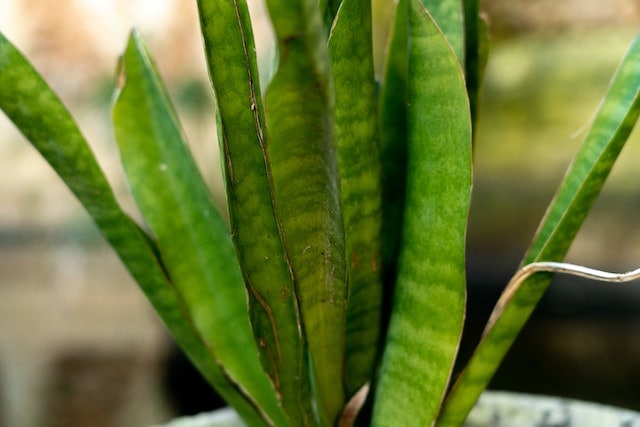
Organic Fertilizer vs. Synthetic Fertilizer
Another factor to consider when selecting a fertilizer is whether it is composed primarily of organic materials or processed synthetic substances.
Chemicals absorbed by a plant have the same effect whether they originate from a massive mechanized factory or an earth-friendly worm compost. The key difference is that organic fertilizers must be broken down before a plant can take the nutrients, whereas synthetic fertilizers are readily absorbable the moment it touches the entire soil surface.
Since organic fertilizers, such as worm compost, give nourishment gradually, there’s less possibility of frying your Snake Plant’s roots with an overload of fertilizer. What this means is that the chances of a fertilizer burn will be reduced. They also provide an excellent habitat for beneficial microbes. Compost is environmentally friendly than industrially produced fertilizer.
Synthetic fertilizer, on the other hand, provides a more precise dose, which might be useful when attempting to alter the plant’s diet for faster development. If a Snake Plant is deficient in nutrients, a synthetic mix can help the plant recover faster.
Remember that many “all-natural” or “organic” fertilizers are also extensively processed by manufacturers in the factory before reaching your cart. The main difference just the raw material: instead of using rocks, the nutrients for these fertilizers are sourced from organic sources such as bone meal, seaweed, or manure.
Generally, any fertilizer labeled as an NPK formula is expected to be synthetic.
You Might Like When To Fertilize Perennials and Shrubs
Slow Release or Quick Release
Synthetic fertilizers are produced to address the aforementioned nutrient overload issue, and they are often known as slow-release fertilizers. They are generally made in the shape of little pellets that you may sprinkle on your potting mix to dissolve gradually.
Does A Snake Plant Needs Liquid Fertilizers
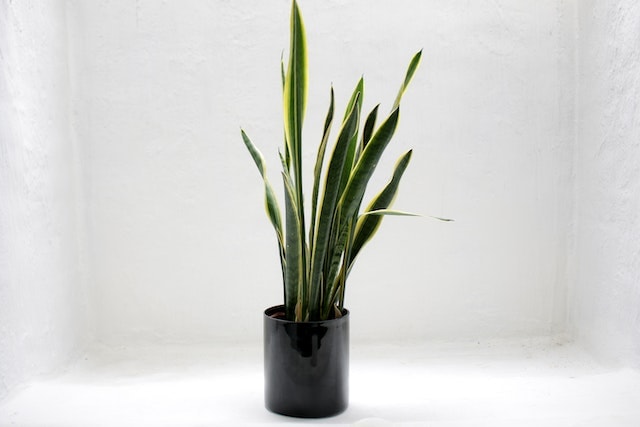
Liquid Fertilizer Vs Granular Fertilizer
Fertilizer is available in a variety of forms; the most common ones are liquid fertilizers and granular fertilizers.
Although granular fertilizers and liquid fertilizers provide the same essential nutrients, each has its own unique advantages and disadvantages.
Granular fertilizer is usually my first choice for general applications. The only exception to this choice is in feeding snake plants or any other succulent plant.
You Might Like Eggshells As Fertilizer
Liquid concentrate
Since liquid fertilizers can be easily diluted, they are the best fertilizer for snake plants. These types of fertilizers are used with water, and as a result, salt accumulation is reduced.
Another reason why you should use a liquid fertilizer for your snake plant is its ease of measurement. When you use a liquid fertilizer instead of a granular mixture, you will have significantly more control over the quantity of fertilizer administered to your plant.
When you use a liquid fertilizer, they tend to be softer on a snake plant; however, they’re not without risk. Liquid fertilizers supply all the nutrients at once, and this can cause fertilizer burn in snake plants. Fertilizer burn occurs when plants show signs of a root rot or unhealthy growth because of over-fertilization
Fertilizer Granules
A Slow release granule fertilizer or slow release plant food is good for plants with modest appetites since they constantly feed throughout the growth season. There’s no large rush of nutrients, as is found in a liquid fertilizer.
When feeding potted plants with granular fertilizers, one thing to watch out for is salt accumulation. It wouldn’t be an issue if you properly flush the soil of your snake plant while watering. But there is one additional item to look out for while feeding these plants.
Fertilizer Spikes
Fertilizer spikes function similarly to slow release fertilizers. The primary distinction is that you do not need to measure or spread the fertilizer on the snake plants soil.
Fertilizer spikes, while convenient, have a few significant drawbacks. The fact that all the nutrients are delivered in one spot is something to worry about. The dramatic disparity in nutrients across the different parts of the soil can harm the root of a plant, causing root rot in some places and nutrient deficiency in others.
How Should You Add Fertilizer To A Snake Plant?
If you want to add fertilizer to your snake plants, you have to first choose the best fertilizer for the plant. After that, you can follow these simple steps;
- Choose the right fertilizer and make sure that you use a little less than the recommended dosage.
- Mix the fertilizer (about 1/4 teaspoon or 1ml) in water and apply the fertilized water on the entire surface soil.
- A handful of compost should be added at intervals.
- After fertilizing, make sure to water the snake plant.
How do you fertilize snake plants in water?
We can grow a snake plant in water and preserve the leaves of the plant in a jar of water.
During the growth season, most users add some amount of liquid fertilizer to the plant; however, I would suggest that you stay away from fertilizer at this time because during this period, the snake plant is already under stress, and fertilizer isn’t as important an ingredient at this time.
It is possible to avoid fertilizing Snake plant leaves preserved in water. However, there is a catch and a minor effort required.
To prevent algal growth, you should change the jar water on a regular basis.
If the water remains stagnant and unchanged, algae will form, limiting the growth of the plant.
By changing the water on a regular basis, the snake plants can receive the proper quantity of nutrients. In addition, fresh tap water has the minerals needed by the plant.
You Might Like Fertilizing An Olive Tree
What happens when you over-fertilize a Snake Plant?
The owners of snake plants can have a serious problem with an excess fertilizer and water.
The plant becomes susceptible to root rot, and you need to address the issue as quickly as possible.
Many additional illnesses and problems can thrive in a root rot environment.
They also attract parasites and vermin, most notably mealybugs, spider mites, and aphids in snake plants.
As a result, the fertilizing rule of less is better.
How do you treat over-fertilized Snake Plants?
If you notice a root rot or any other sign, you must act quickly. It’s evident that the snake plant was overfertilized, and you need to treat it right now.
This scenario might be nasty, and we don’t want to deal with it. Nonetheless, action is required.
You will take the following steps:
- Examine the plant for signs of root or leaf damage.
- Remove all of the brown/yellow leaves.
- If the fertilizer settles on the soil’s top layer, use a spoon to remove it.
- Do not take off more than 25% soil when following the aforementioned procedure. Refill with a fresh soil if excess was removed.
- To flush the surplus fertilizer, place the plant under a running water.
- Repeat the preceding steps at least 3 to 4 times.
- Examine the soil; if it does not appear to be in excellent condition, place it in a separate pot.
- When repotting, use ordinary potting soil mixed with compost.
- Water your plant thoroughly after repotting.
- To avoid stunted growth, do not feed the plant after repotting.

